Overview
The article presents authoritative insights into effective wine marketing campaigns that can significantly enhance engagement and sales for wineries. It primarily emphasizes:
- Direct-to-consumer strategies
- Urgency marketing
- Educational content
- Influencer partnerships
- Storytelling
Each campaign employs distinct approaches, such as instilling a sense of urgency through limited-time offers and enriching consumer knowledge via educational resources. This demonstrates how diverse marketing tactics can forge effective connections with consumers and drive revenue growth in the competitive wine industry. By leveraging these strategies, wineries can not only boost their visibility but also foster lasting relationships with their clientele, ultimately prompting increased sales and market share.
Introduction
The wine industry is experiencing a transformative shift as producers actively seek innovative methods to connect with consumers and elevate their market presence. The rise of direct-to-consumer (DTC) strategies not only boosts sales but also cultivates deeper relationships with audiences. This article delves into nine exemplary wine marketing campaigns that have effectively engaged consumers and driven sales growth, illustrating how urgency, education, influencer partnerships, and even humor can play pivotal roles. As competition intensifies, a critical question emerges: which strategies will distinguish themselves in 2025 and beyond, and how can wineries leverage these approaches to secure their position in a rapidly evolving market?
Enocap: Transformative DTC Strategies for Family-Owned Wineries
Enocap stands at the forefront of revolutionizing the beverage industry, specializing in direct-to-consumer (DTC) strategies. By developing robust DTC sales channels, optimizing wine club memberships, and implementing effective demand generation techniques, Enocap empowers family-owned vineyards to flourish. The firm’s data-driven approach has yielded remarkable results, with clients experiencing an average e-commerce growth of 191% in 2020. This growth underscores the effectiveness of the best wine marketing campaigns, especially DTC strategies, in enhancing brand storytelling and securing essential funding for wine producers.
As we look to 2025, the impact of DTC sales channels on vineyard revenue growth remains profound. Producers are increasingly leveraging these strategies to engage directly with consumers, with 27% of new membership signups originating from digital channels. This statistic illustrates the substantial potential for . Enocap's methodologies not only drive immediate sales but also cultivate long-term relationships with customers, establishing them as a key player in the best wine marketing campaigns for family-owned wineries navigating the complexities of the modern market.
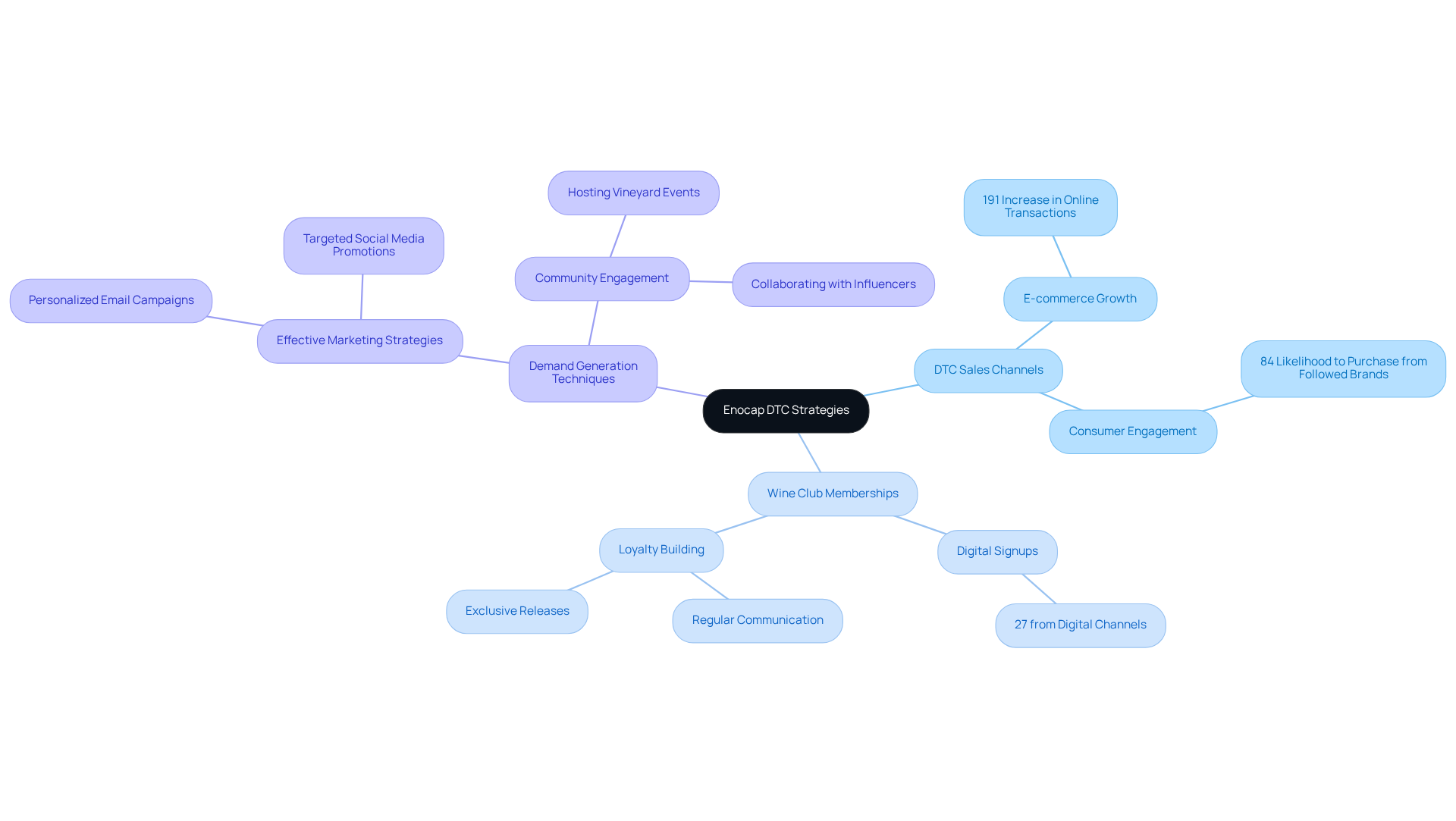
Last Bottle: Panic Frenzy Campaign That Boosts Sales
Last Bottle's Panic Frenzy campaign exemplifies the powerful impact of urgency in driving sales within the beverage sector. By offering limited-time promotions on distinctive beverages, Last Bottle cultivates a compelling sense of urgency that compels consumers to act swiftly. This strategy not only yields immediate sales but also fosters a eager to participate in future promotions.
Experts suggest that the best wine marketing campaigns employing urgency marketing tactics can profoundly influence purchasing behavior, especially in 2025, as wineries explore innovative methods to capture attention in a fiercely competitive market.
The success of the Panic Frenzy campaign underscores how limited-time offers can generate excitement and anticipation, ultimately enhancing customer engagement and driving overall sales.
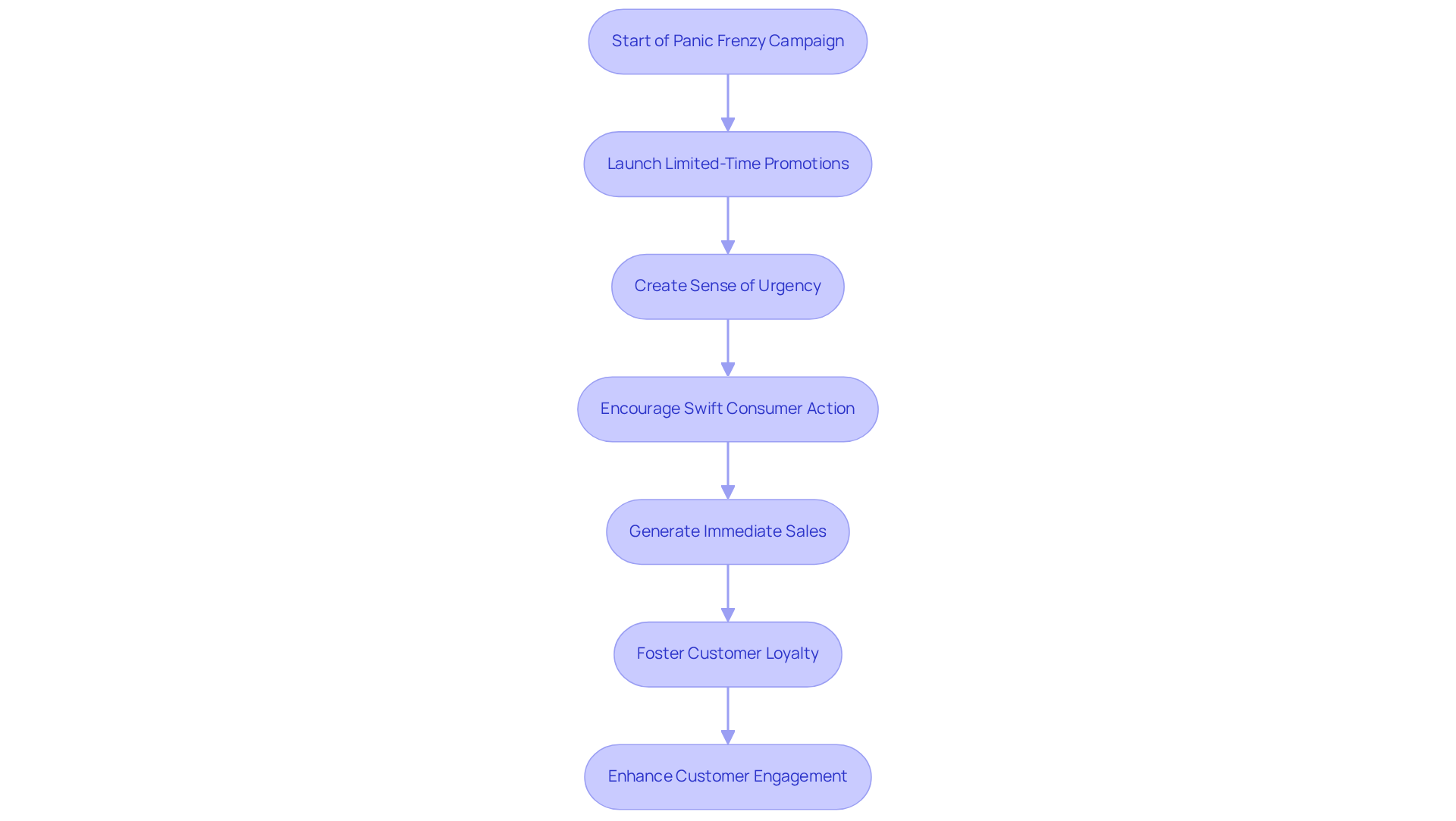
Wine Folly: Educational Marketing That Engages Consumers
Wine Folly stands at the forefront of , providing engaging material that demystifies wine for consumers. Through a blend of infographics, articles, and interactive resources, Wine Folly effectively educates wine enthusiasts on diverse wine-related topics, from tasting notes to food pairings. This method not only enriches consumer knowledge but also cultivates loyalty, as customers develop a deeper connection with the brand.
By harnessing Enocap's strategic capital advisory services, family-owned vineyards can significantly enhance their educational marketing initiatives. Enocap empowers vineyards to tap into direct-to-consumer revenue streams while crafting compelling brand narratives that transform occasional buyers into dedicated club members.
This synergy between educational content and strategic capital planning is pivotal for driving sustainable growth, ensuring that family vineyards prosper for generations to come.
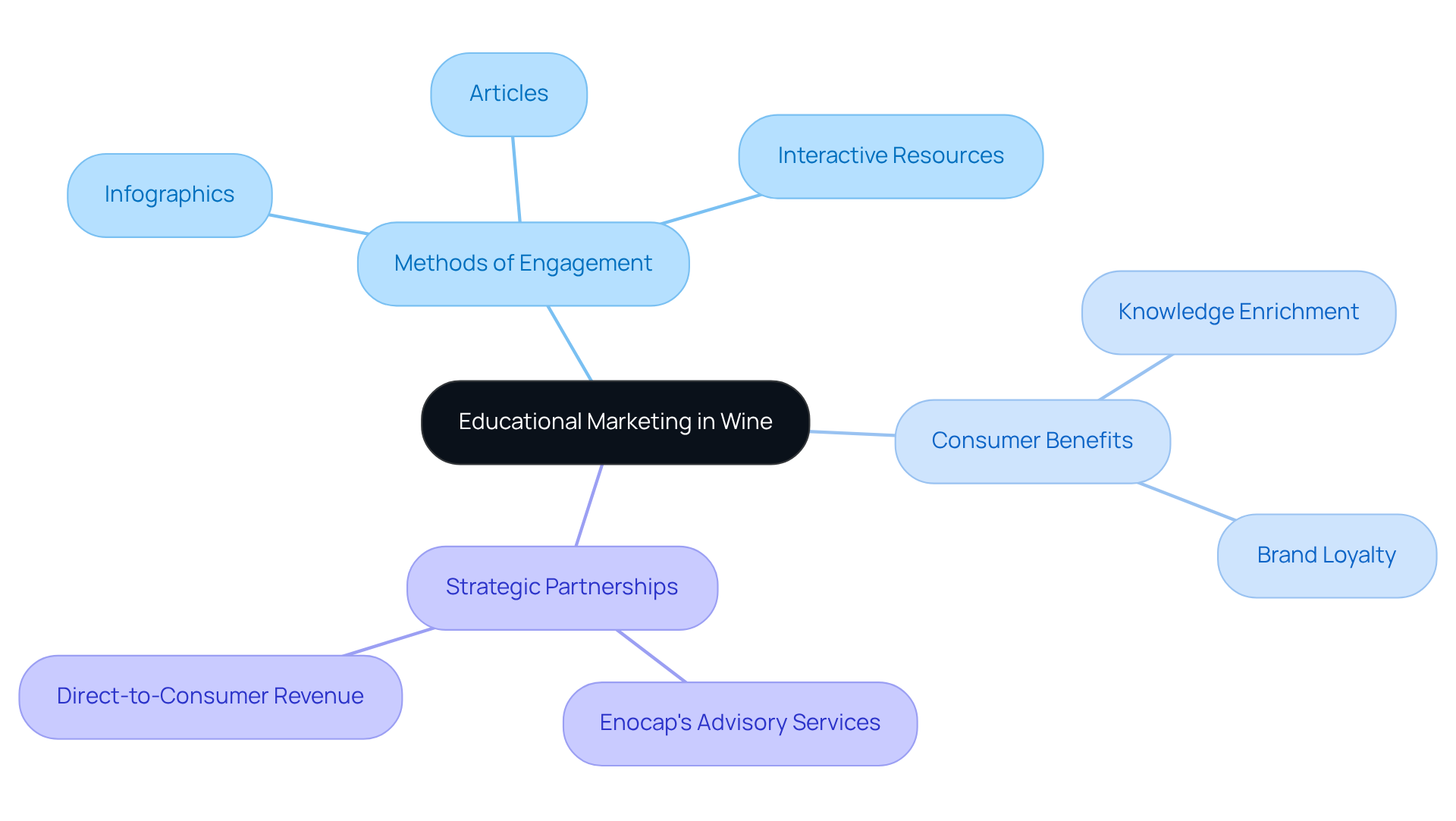
Influencer Campaigns: Engaging Audiences Through Authentic Partnerships
Influencer campaigns have emerged as some of the best wine marketing campaigns for beverage producers aiming to connect with consumers authentically. By collaborating with beverage influencers who align with their brand values and target demographics, producers can significantly enhance their visibility and credibility, which are essential elements of the best wine marketing campaigns in a competitive market. These partnerships typically involve product placements, tastings, and engaging social media promotions that present the establishment's offerings in a relatable and appealing context.
The impact of these authentic collaborations is profound; research indicates that the best wine marketing campaigns involving wine influencers influence 68% of buyers' selections, underscoring their role in shaping purchasing decisions. In 2025, vineyards that implemented the best wine marketing campaigns through effective influencer marketing witnessed a remarkable increase in engagement and sales, with some reporting conversion rates soaring by 133% after establishing strategic influencer partnerships.
Moreover, the success of these collaborations lies in their ability to forge genuine relationships with customers. By sharing compelling stories and highlighting the establishment's unique narrative through influencers, vineyards can cultivate trust and loyalty among prospective customers. This approach aligns with Enocap's philosophy of crafting narratives that convert casual buyers into dedicated club members. Additionally, integrating strategic capital planning into these campaigns can further amplify their effectiveness, ensuring that businesses engage consumers while optimizing their financial strategies for sustainable growth.
To further boost engagement, creating a , such as #SipOurVineyard, can stimulate user-generated content and extend the reach of influencer campaigns. As the wine industry continues to evolve, harnessing the power of influencer marketing will be vital for producers aiming to strengthen their market presence through the best wine marketing campaigns and foster sustainable growth. Furthermore, maintaining a user-friendly and visually appealing website is crucial, as it serves as the digital storefront for wine producers, maximizing the impact of influencer campaigns. Consistency in posting and engaging on social media is also essential for sustaining brand presence and should complement influencer partnerships. By integrating these strategies and utilizing digital marketing tools like email marketing, vineyards can effectively connect with and engage audiences, ensuring long-term success.
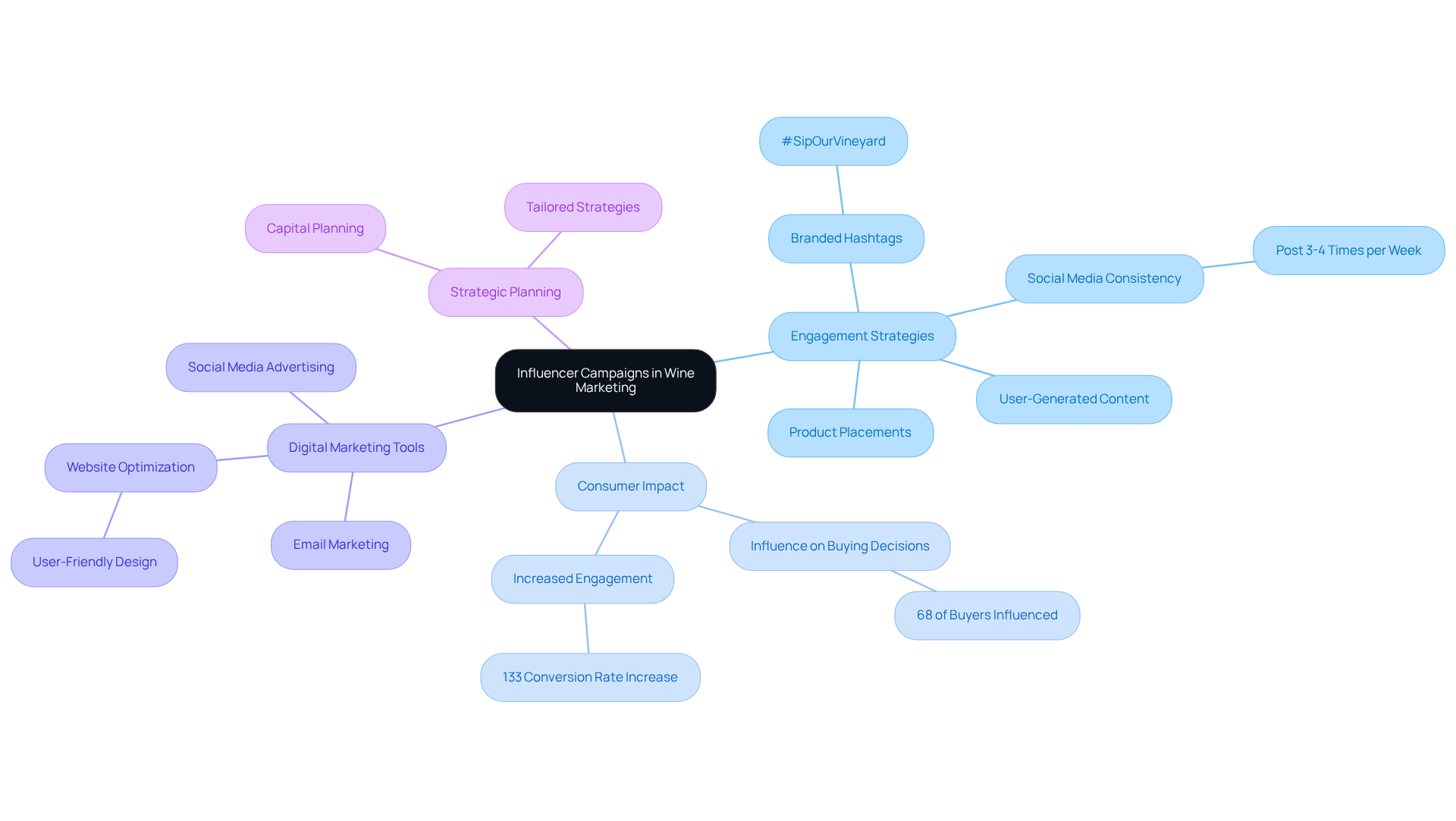
Virtual Wine Tastings: Innovative Engagement Strategies
Virtual wine tastings have become one of the best wine marketing campaigns for vineyards to engage with consumers and implement effective . By providing curated tasting kits that participants can enjoy from home, vineyards implement the best wine marketing campaigns to create memorable experiences that foster connection and loyalty—essential for family-owned establishments aiming to thrive for generations.
These events, which are part of the best wine marketing campaigns, often include live interactions with winemakers or sommeliers, offering an educational component that enhances the overall experience and transforms casual buyers into loyal club members. This method not only fosters steady growth but also aligns with strategic capital planning for family-owned businesses.
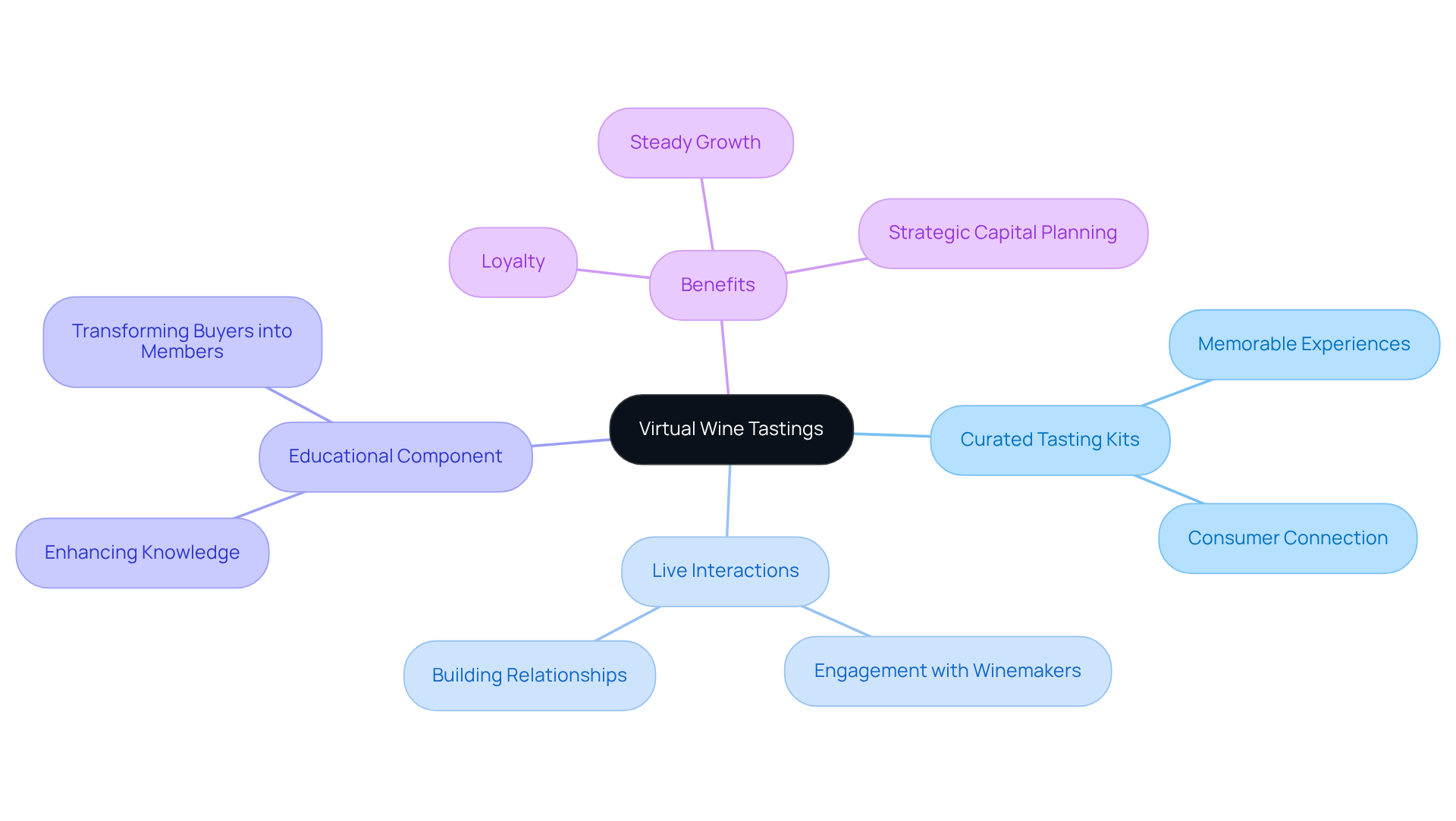
Social Media Giveaways: Driving Engagement and Brand Awareness
Social media giveaways have emerged as some of the best wine marketing campaigns for vineyards seeking to enhance engagement and elevate brand awareness, transforming casual buyers into loyal club members. By offering enticing rewards such as bottle beverages, unique tasting events, or branded items, vineyards can effectively motivate supporters to engage, share, and tag friends. This approach not only broadens the establishment's reach but also cultivates a vibrant community among wine enthusiasts, which is essential for developing sustainable direct-to-consumer channels that promote steady growth.
In 2025, the impact of giveaways on brand recognition is particularly significant, with numerous vineyards reporting substantial increases in social media interaction. Campaigns that integrate user-generated content and interactive elements are considered some of the best wine marketing campaigns, as they enhance brand visibility and foster deeper connections with consumers. As industry specialists emphasize, clarity in communication and authenticity in storytelling are crucial; establishments that share behind-the-scenes insights and customer testimonials frequently experience higher engagement than those relying solely on polished promotional materials.
To execute a for beverages, wineries should focus on crafting clear calls to action, such as 'Tag a friend to win!' or 'Share your favorite wine moment!' This strategy not only encourages participation but also amplifies the campaign's reach. Furthermore, leveraging social media contests can significantly boost product visibility, as evidenced by the rising trend of digital ad expenditure in the alcoholic beverage sector, which increased by over 22% in 2024. By strategically planning and implementing these giveaways, wine producers can effectively engage their audience, enhance loyalty, and solidify their brand presence as part of the best wine marketing campaigns in a competitive market. Moreover, these initiatives can lay the groundwork for strategic capital planning, as heightened engagement and community building can lead to greater financial opportunities, including potential investments and partnerships that support the establishment's long-term growth.
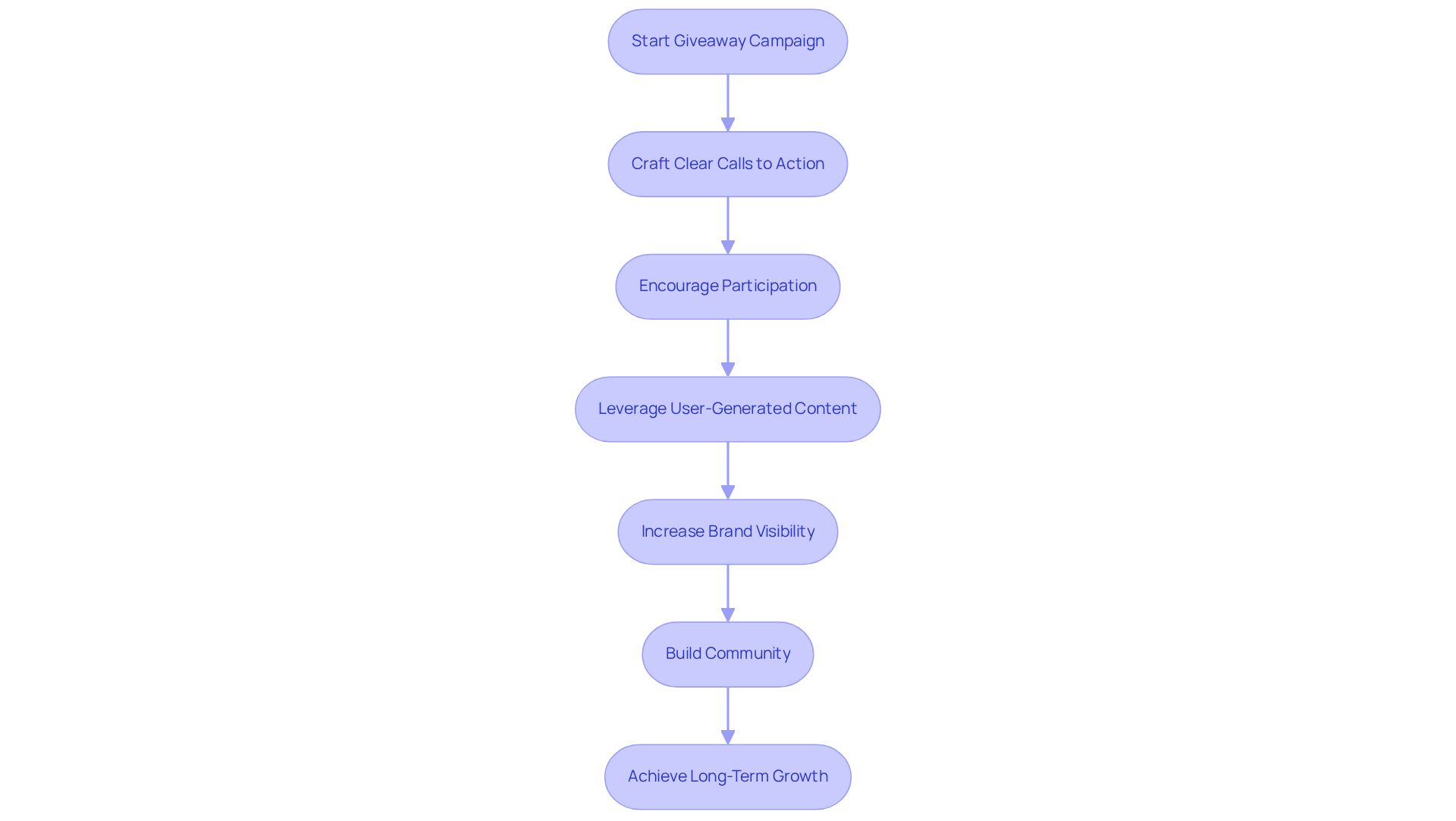
Cross-Marketing: Collaborating with Local Businesses for Greater Reach
Cross-marketing with local businesses can significantly enhance a vineyard's reach and visibility, particularly when leveraging Enocap's transformative direct-to-consumer strategies. Collaborating with restaurants, hotels, or local events allows vineyards to develop co-branded promotions that attract new customers. For example, hosting wine-pairing dinners or participating in local festivals can effectively present the vineyard to a broader audience while providing additional value to the partner business.
The beverage sector is projected to generate by 2025, underscoring the potential impact of these collaborations on customer acquisition. Moreover, vineyards engaged in local partnerships can benefit from increased visitor traffic and brand awareness, as evidenced by the 74 million tourist trips to grape-growing areas that bolster local economies.
As industry experts note, "Building wine loyalty among younger demographics requires innovative approaches," and local collaborations serve as an effective means to engage these consumers in familiar settings. Enocap's strategic capital planning can further support these initiatives by pinpointing opportunities for debt, equity, or acquisition that align with local business objectives.
However, establishments must consider potential challenges in aligning marketing strategies with local business goals. By harnessing the strengths of local businesses alongside Enocap's expertise, vineyards can enhance their marketing strategies with the best wine marketing campaigns and cultivate long-term customer relationships.
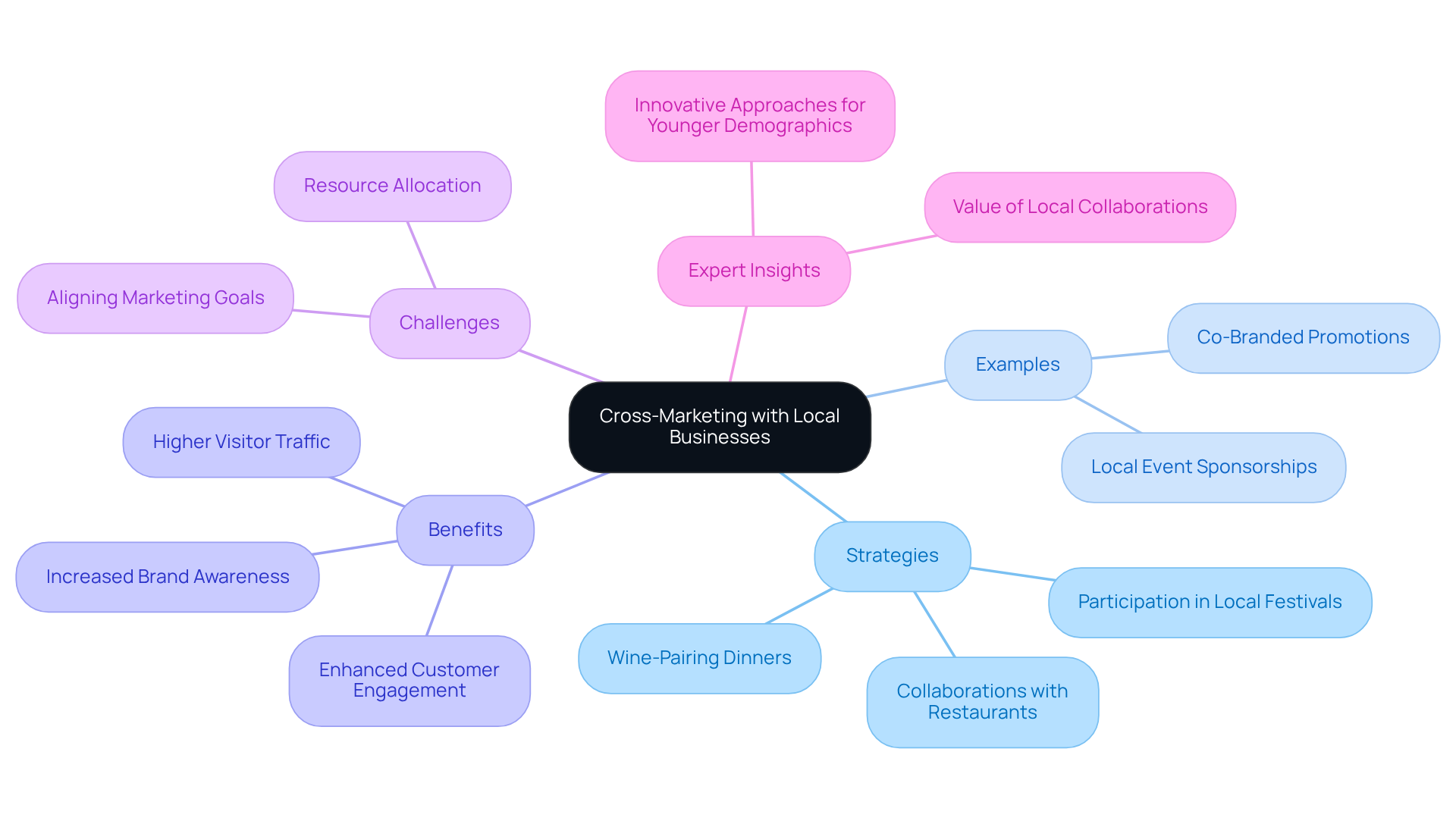
Email Marketing: Essential for Customer Retention and Sales Growth
Email marketing stands as a cornerstone for vineyards seeking to enhance customer retention and stimulate sales growth. By sending tailored newsletters, promotions, and updates, wine producers can sustain engagement and keep their audience informed. Effective email marketing strategies are crucial, boasting an average ROI of $42 for every $1 spent. This statistic underscores its cost-effectiveness in driving revenue.
Personalized newsletters play a significant role in fostering customer loyalty. They empower wineries to share their unique stories, showcase new releases, and provide exclusive offers, thereby creating a deeper connection with subscribers. This tailored approach not only enhances the customer experience but also encourages repeat purchases, as consistent communication reinforces brand loyalty.
Segmentation is key to maximizing the impact of email campaigns. By categorizing email lists based on shared characteristics—such as purchasing habits or engagement levels—wineries can tailor their messaging to resonate with various groups of buyers. For instance, e-commerce customers may respond more favorably to promotions focused on online sales, while on-premise visitors might appreciate information about tasting room events and exclusive wine flights. This targeted strategy can lead to significantly .
As the digital landscape becomes increasingly competitive, wine producers must adopt effective communication channels to connect with consumers and industry partners. The significance of email marketing remains strong, offering a distinct opportunity for vineyards to convey their identity and engage with subscribers on a personal level. By implementing these strategies, wineries can not only boost their sales but also cultivate lasting relationships with their customers.
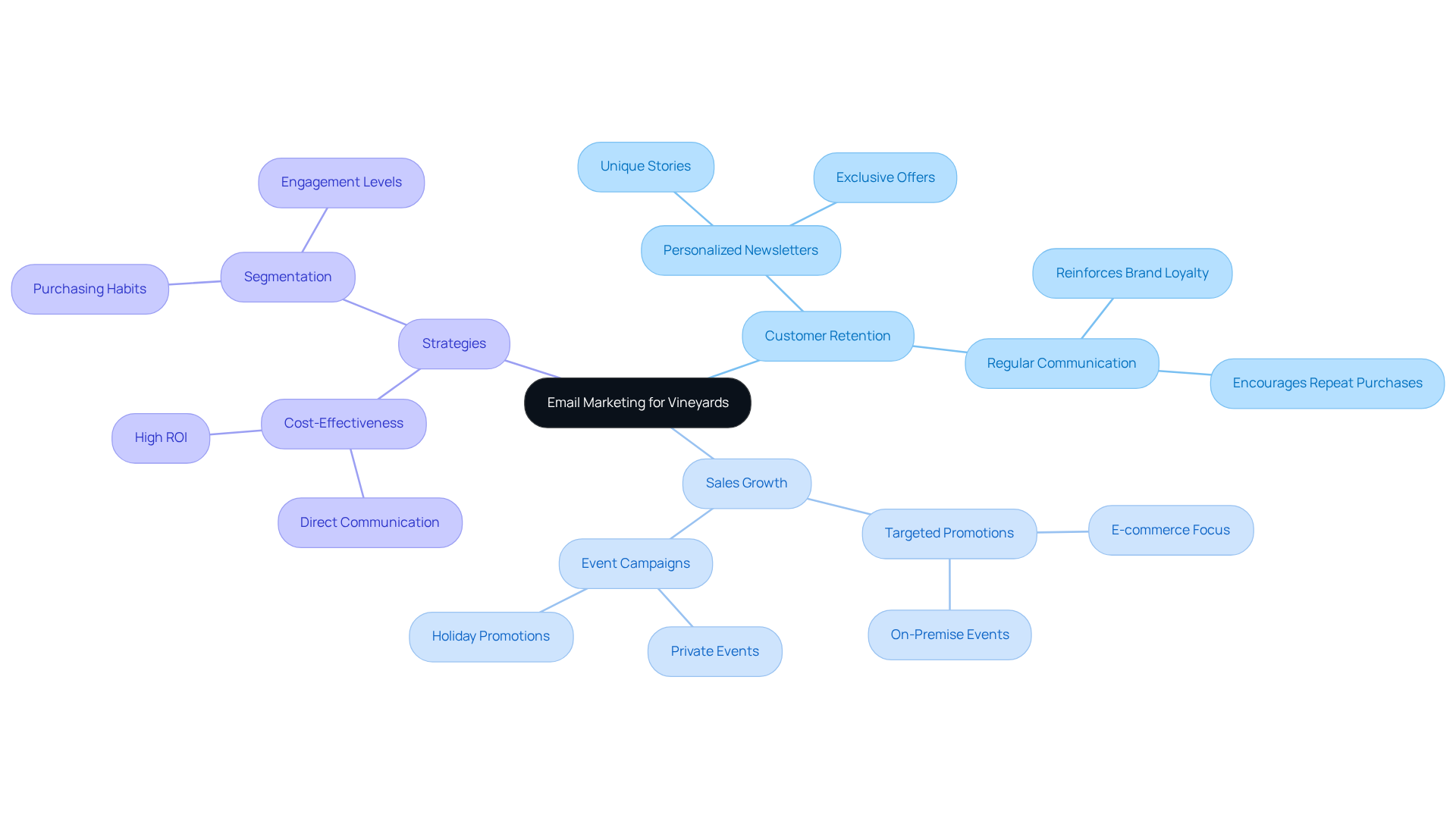
Humor in Marketing: Creating Memorable Consumer Experiences
Integrating humor into wine promotion creates unforgettable experiences for buyers, significantly enhancing recall of the label. Wineries that embrace light-hearted messaging or often create some of the best wine marketing campaigns, forging personal connections with their audiences and making their identities more relatable. This strategy not only entertains but also cultivates a positive relationship with the product, motivating individuals to share their enjoyable experiences with others.
Research indicates that:
- 90% of individuals are more likely to remember a brand's advertisement if it incorporates humor.
- 72% prefer brands that utilize humor over those that do not.
Furthermore, research by Professor Martin Eisend reveals that humor boosts purchase intention, establishing it as a valuable asset for vineyards. As the beverage sector evolves in 2025, leveraging humor can serve as an effective strategy for vineyards to implement some of the best wine marketing campaigns aimed at enhancing engagement and fostering loyalty among patrons.
However, it is crucial to navigate the potential risks associated with humor in marketing to avoid missteps that could alienate audiences.
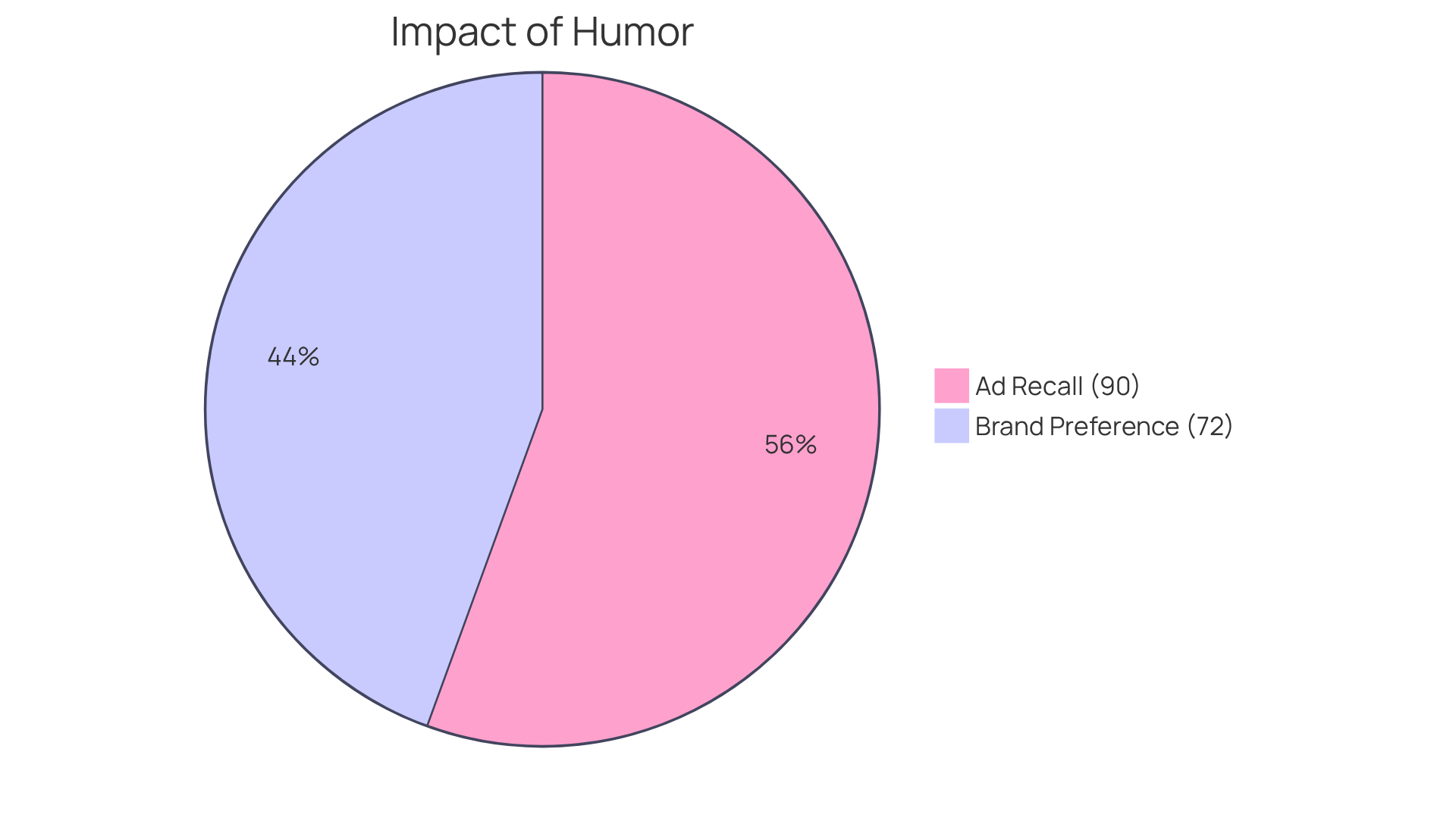
Storytelling: Highlighting Unique Narratives to Engage Consumers
Storytelling serves as a vital instrument in wine promotion, enabling producers to showcase their unique narratives and forge emotional connections with buyers. By articulating the vineyard's history, the intricacies of the winemaking process, or the personal journeys of those involved, wine producers can craft compelling narratives that resonate deeply with their audience. This strategy not only fosters brand loyalty but also inspires individuals to share their experiences, thereby expanding the winery's reach.
In 2025, buyer preferences increasingly lean towards companies that prioritize authenticity and transparency in their storytelling. Wineries that adeptly convey their distinctive qualities—such as , local heritage, or innovative techniques—can significantly boost engagement. For instance, brands that highlight their commitment to environmentally friendly practices and ethical labor resonate strongly with younger consumers, who prioritize sustainability in their purchasing decisions.
Moreover, the integration of technology, including AI-driven recommendation systems and interactive smart packaging, empowers vineyards to personalize their narratives further, catering to specific individual preferences. This hyper-personalization is crucial as today's consumers expect tailored experiences that align with their values and interests.
As industry experts underscore, the capacity to narrate a vineyard's story in a relatable and engaging manner is essential for capturing the attention of contemporary consumers. By leveraging social media platforms such as Instagram and TikTok, vineyards can visually convey their stories, rendering them more accessible and appealing to a wider audience. Additionally, implementing strategic capital planning can assist vineyards in effectively allocating resources to bolster these marketing initiatives.
Ultimately, the art of storytelling in wine marketing is crucial for the best wine marketing campaigns, as it combines strategic capital planning and direct-to-consumer initiatives to enhance consumer engagement and fortify a winery's position in a competitive marketplace.
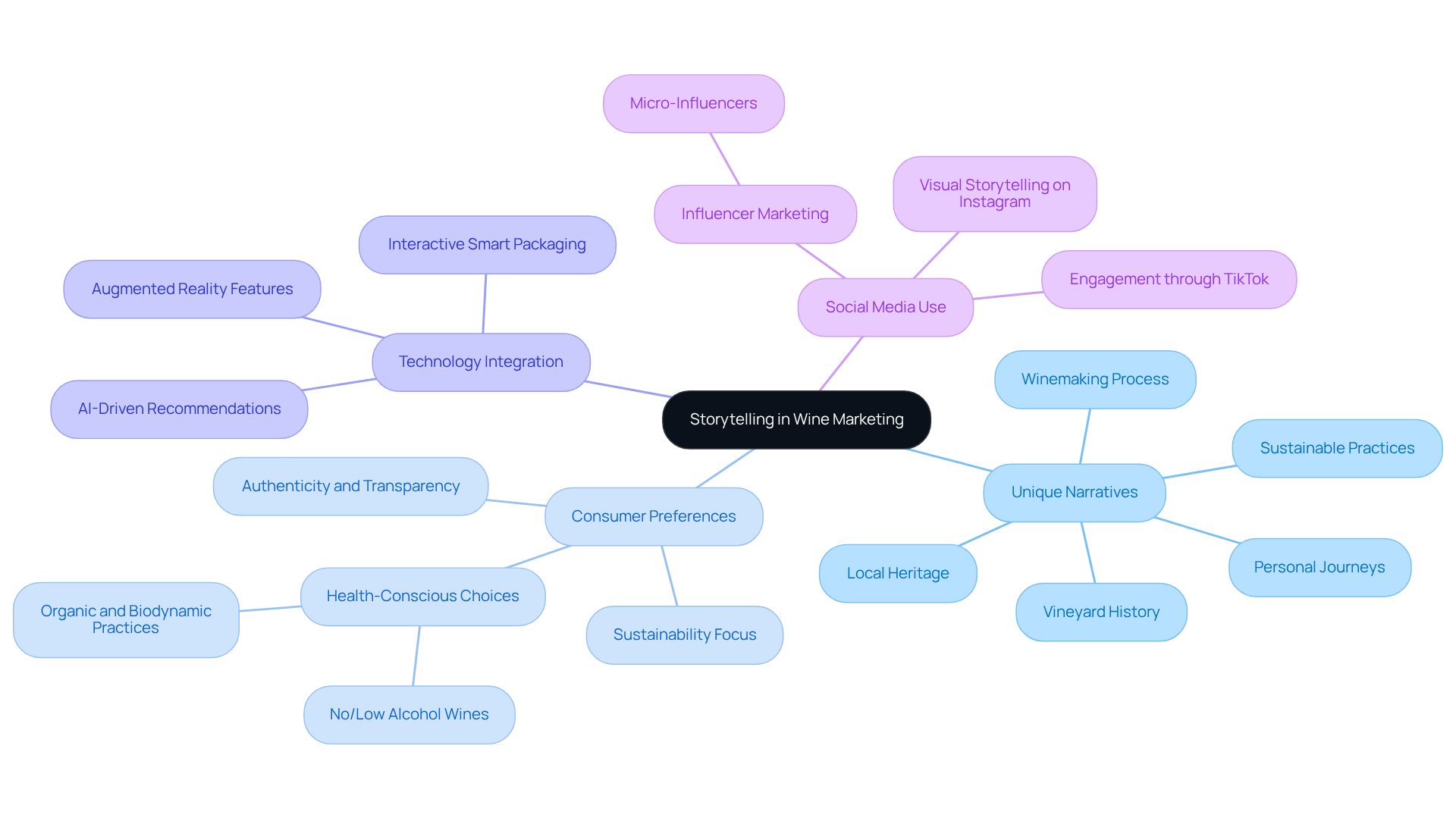
Conclusion
The exploration of the best wine marketing campaigns unveils dynamic strategies that can significantly enhance engagement and sales for wineries. By focusing on innovative approaches such as:
- Direct-to-consumer (DTC) strategies
- Educational marketing
- Influencer partnerships
- Storytelling
Vineyards can cultivate strong connections with their audience while adeptly navigating the complexities of the modern market. These campaigns not only drive immediate sales but also foster long-term loyalty, ensuring that family-owned wineries thrive for generations to come.
Key insights from the article underscore the effectiveness of urgency in marketing, as exemplified by Last Bottle's Panic Frenzy campaign, alongside the vital role of educational content provided by Wine Folly. Furthermore, the rise of virtual tastings and social media giveaways illustrates how digital engagement can significantly expand a winery's reach. Collaborations with local businesses and strategic email marketing further enhance brand visibility and customer retention, while the use of humor and storytelling creates memorable consumer experiences that resonate deeply with buyers.
In a rapidly evolving industry, the significance of these marketing strategies cannot be overstated. Wineries must embrace innovative techniques and adapt to changing consumer preferences to maintain competitiveness. By integrating these best practices into their marketing efforts, vineyards can not only boost their sales but also build a loyal community of wine enthusiasts. The future of wine marketing hinges on the ability to connect authentically with consumers, leveraging the power of engaging narratives and strategic partnerships to create lasting impressions in the hearts and minds of their audience.
Frequently Asked Questions
What is Enocap and what strategies do they specialize in?
Enocap is a company that specializes in direct-to-consumer (DTC) strategies for family-owned wineries. They focus on developing robust DTC sales channels, optimizing wine club memberships, and implementing effective demand generation techniques.
What results have clients experienced through Enocap's strategies?
Clients of Enocap have experienced an average e-commerce growth of 191% in 2020, highlighting the effectiveness of their DTC strategies and wine marketing campaigns in enhancing brand storytelling and securing funding for wine producers.
How significant are DTC sales channels for vineyard revenue growth?
DTC sales channels have a profound impact on vineyard revenue growth. By 2025, 27% of new membership signups are projected to originate from digital channels, indicating the substantial potential for enhanced consumer engagement and loyalty.
What is Last Bottle's Panic Frenzy campaign and how does it work?
Last Bottle's Panic Frenzy campaign is a marketing strategy that creates a sense of urgency by offering limited-time promotions on distinctive beverages. This approach compels consumers to act quickly, resulting in immediate sales and fostering a loyal customer base.
How does urgency marketing influence purchasing behavior in the beverage sector?
Urgency marketing tactics, such as limited-time offers, can profoundly influence purchasing behavior by generating excitement and anticipation among consumers, which ultimately enhances customer engagement and drives overall sales.
What role does Wine Folly play in educational marketing?
Wine Folly provides engaging educational content that demystifies wine for consumers through infographics, articles, and interactive resources. This approach enriches consumer knowledge and fosters brand loyalty by helping customers connect more deeply with the brand.
How can family-owned vineyards enhance their educational marketing initiatives?
Family-owned vineyards can enhance their educational marketing initiatives by leveraging Enocap's strategic capital advisory services, which help them tap into DTC revenue streams while crafting compelling brand narratives to convert occasional buyers into dedicated club members.
Why is the synergy between educational content and strategic capital planning important for family vineyards?
This synergy is pivotal for driving sustainable growth, as it ensures that family vineyards can prosper for generations to come by effectively educating consumers and establishing long-term relationships.




